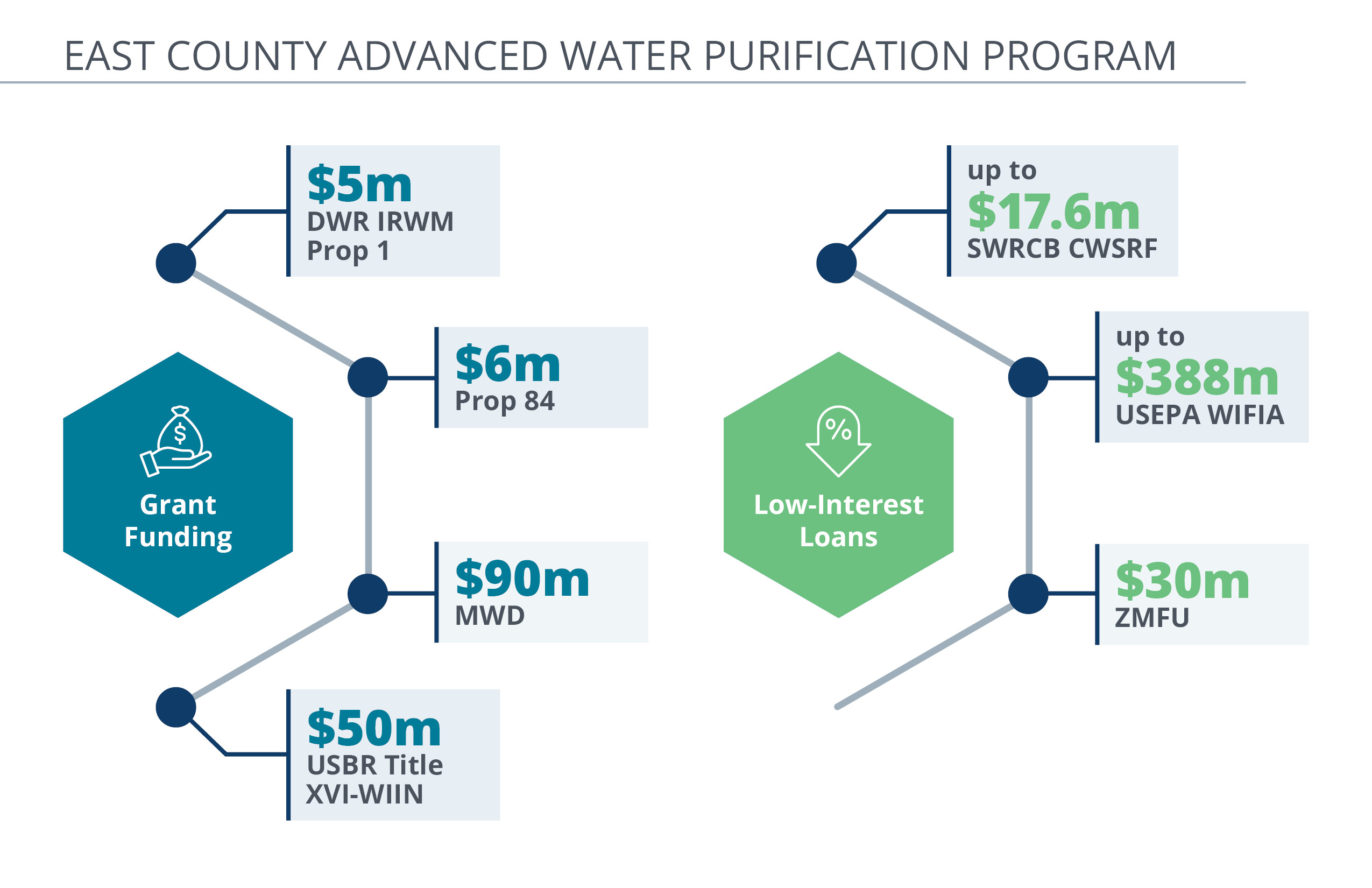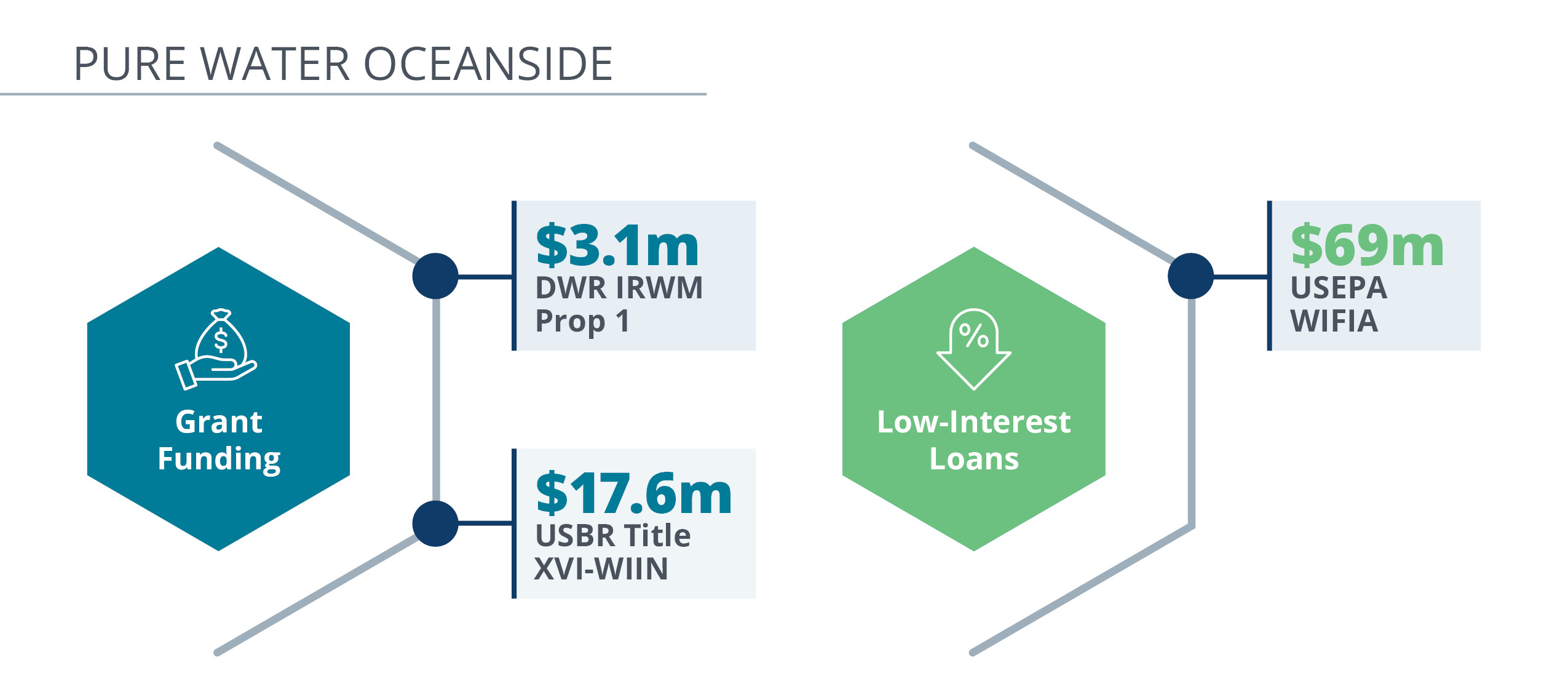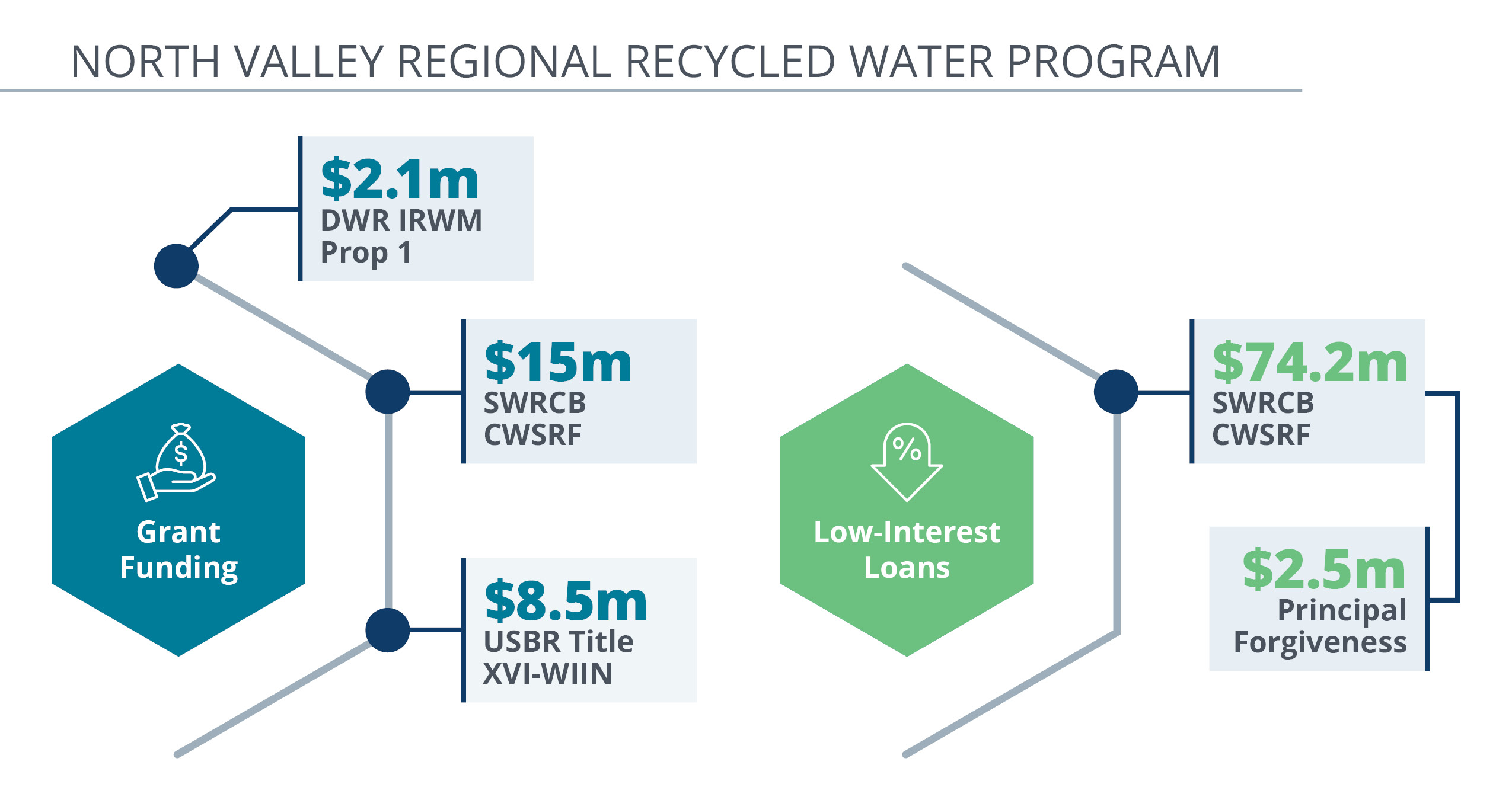Many communities battling water scarcity are already sold on water reuse but can’t seem to clear the financial hurdles that keep them from building new facilities. Often, our municipal clients know there is money available, but effective timing and approach can elude them. Depending on state or region there may be local funding available, however, taking a top-down approach — starting with federal opportunities — can maximize municipalities’ eligibility for grants and low-interest loans and help them avoid missteps that could disqualify their projects.
A WIINing Strategy
Under the umbrella of the WaterSMART programs, utilities in the 17 Western states and Hawaii can apply for project funding through the Bureau of Reclamation’s (USBR) Title XVI – Water Infrastructure Improvement for the Nation (WIIN) program. Grants are allocated through an annual competitive application process and fund projects that reclaim or reuse municipal, industrial, or agricultural wastewater; or impaired groundwater or surface water.
USBR is expected to announce new funding opportunities for construction and implementation this summer, however, building an application for WIIN funding requires substantial lead time. Utilities that have not yet begun the process are unlikely to qualify for the upcoming opportunities, as applicants must complete a feasibility study and have it approved by USBR to be eligible for implementation grants. 2023 also saw the revival of WIIN grant funds for preparing your feasibility study – another round of planning grant funding may be coming in early 2024.



